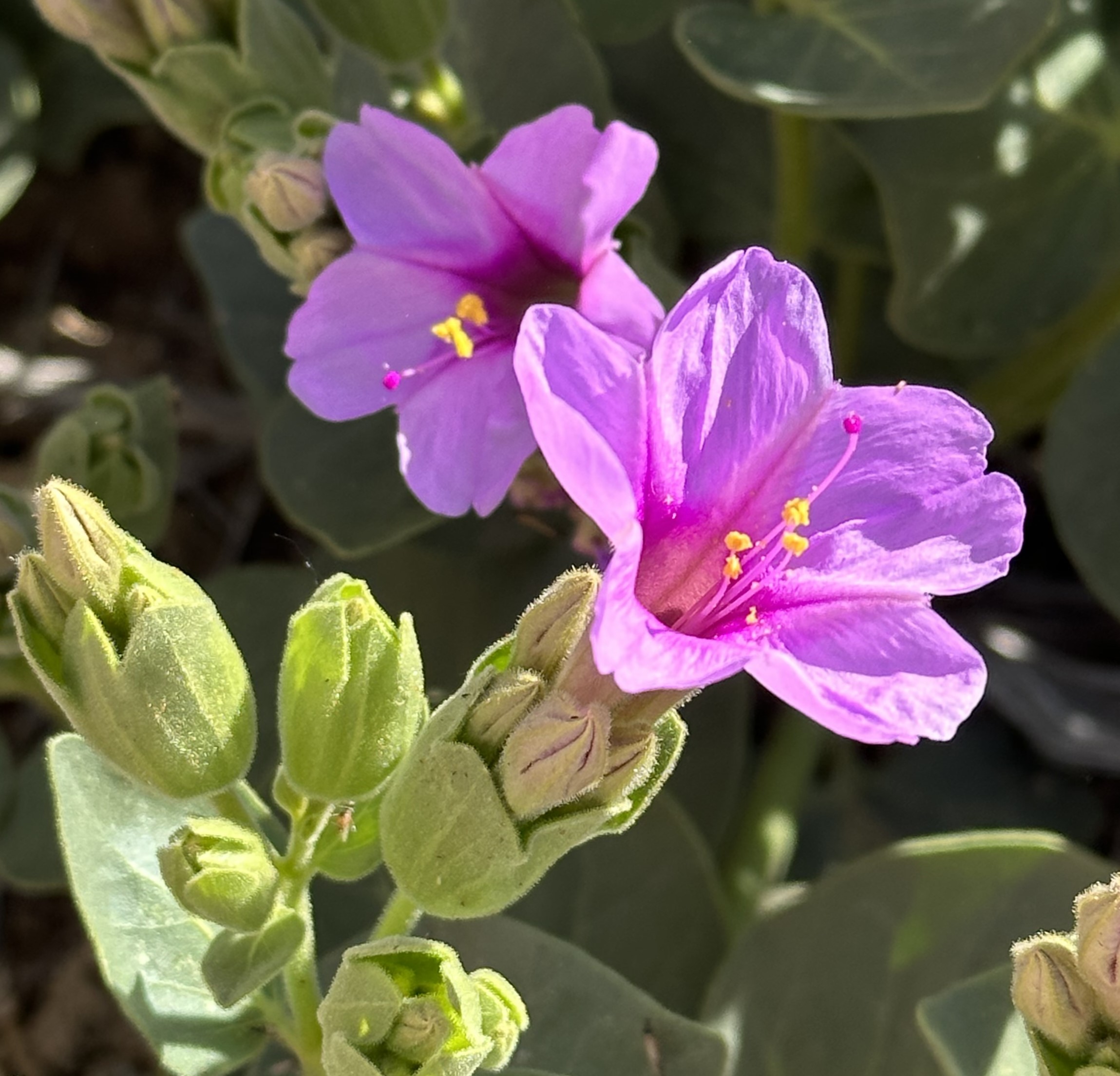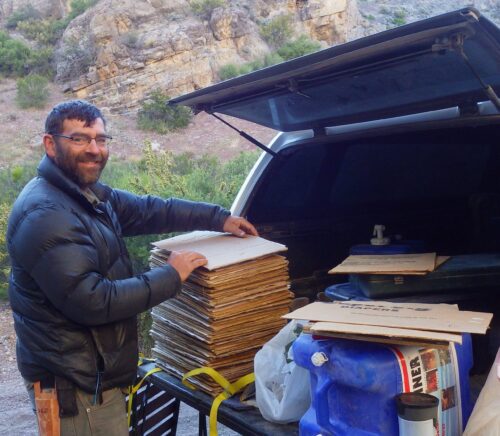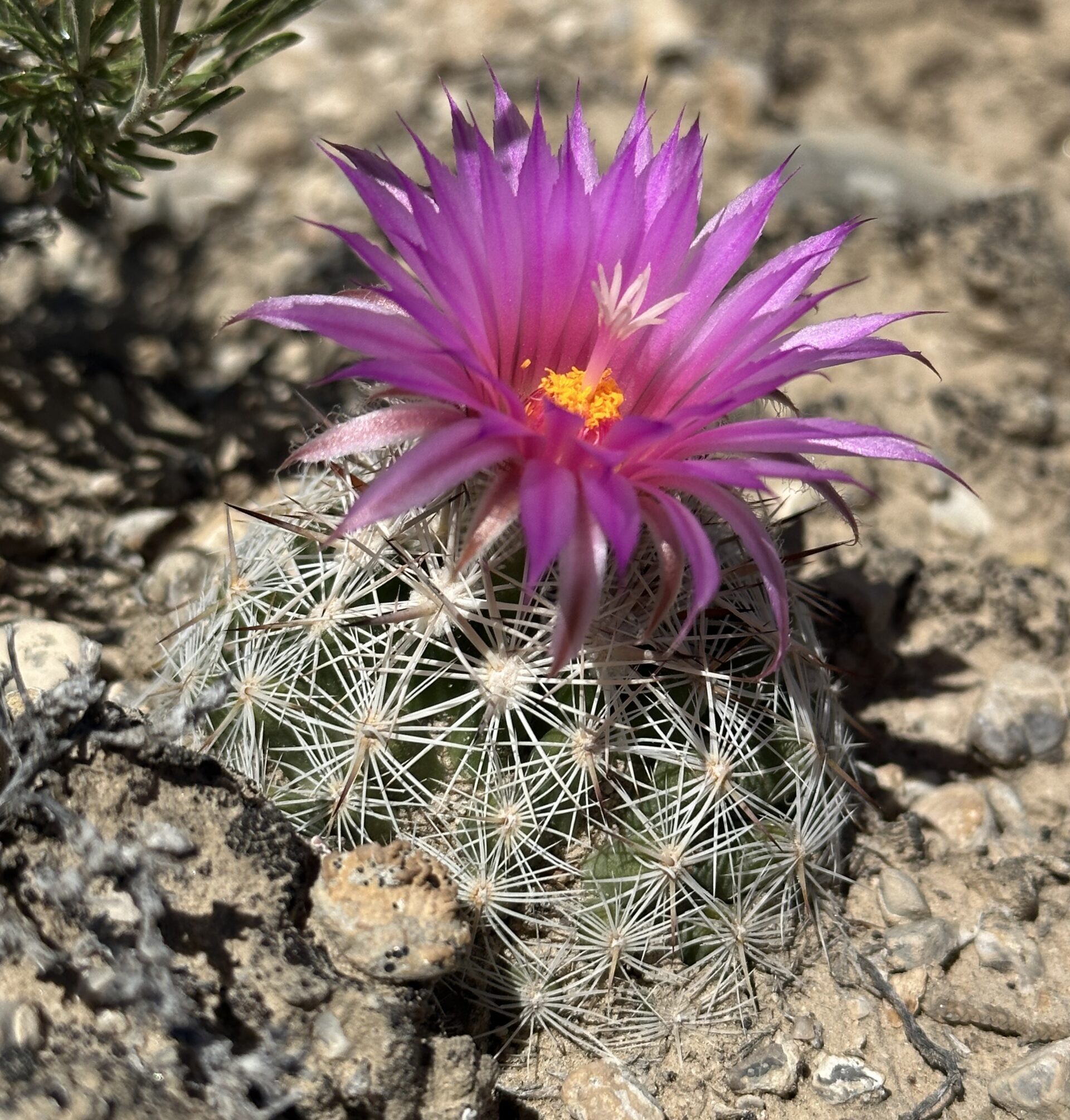About the Gregory Gust Herbarium
Like a librarian creating and managing a library, Greg created, curated, and managed ENLC’s herbarium. An herbarium is a scientific repository for dead, dried, pressed and pampered plants. Each dried plant is mounted onto acid-free, archival paper using an acid free adhesive. Other associated data including: locality, GPS coordinates, habitat, associated species, and details regarding the morphology of the specimen are recorded on an acid-free label that is affixed to the paper. The herbarium currently houses over 6000 specimens focusing on the Mojave and Great Basin floristic regions of Nevada. Important historic specimens of the collection include 7 Isotype specimens collected by Ira W. Clokey during his 1936-1938 botanical explorations of Clark County, Nevada’s Spring Mountains.
The herbarium is a member of the Consortium of Intermountain Herbaria, Intermountain Region Herbarium Network, and Index Herbarium. Its Index Herbarium acronym is ENLC. Access to all non-sensitive specimen records are available online via the Intermountain Region Herbarium Network’s portal.
ENLC staff would like to honor Greg by dedicating the ENLC herbarium in his name. Currently, we have no funding to mount, process and digitize the remaining specimens that Greg collected. We are asking our ENLC members, partners, and friends to help us in the herbarium dedication and further curation for the specimens that Greg collected and those that have not yet been collected.
He is the wind, the rain, the sun, the trees. He is the dizzying mountain peaks and the vibrant wildflower blooms. We love you, Greg. Until we meet again.
For tours of the Gregory Gust Herbarium email hhallman@envlc.org or call 775-289-7974.
To donate to the Gregory Gust Herbarium, download and complete the form and mail it to the listed address or fill out the form below.
Gregory Garrett Gust Memorial
August 27, 1975 – March 14, 2023
Greg was a wonderful friend, coworker, scientist, outdoor enthusiast, forager, and many other things. He will be dearly missed.
Greg was born and raised in Milwaukee, Wisconsin, and would ultimately attend college at the University of Wisconsin-Milwaukee, where he spent a year working in the plant systematics molecular lab. He conducted DNA sequencing and phylogenetic analysis on tuberous members of the Anemone plant genus, which are members of the buttercup family (Ranunculaceae). Before graduating from UWM, Greg spent a year living in Nepal through the University of Wisconsin’s study abroad program. While there, he conducted ethnobotanical field work that culminated in a senior thesis.
Upon graduating from UWM with a BA in Anthropology and minor in Biology (emphasis in botany), Greg worked as a seasonal biological technician in Washington’s North Cascades National Park. In 2002, he accepted a research specialist position with the Missouri Botanical Garden’s William L. Brown Center for Plant Genetic Resources. As the Center’s North American collection’s manager, he traveled extensively throughout the U.S. and Puerto Rico collecting herbarium specimens and plant samples for drug discovery and pharmacological analysis.
After living on the banks of the Mississippi River for nearly four years, Greg took his position with ENLC. Beckoned by the beauty and adventure of the mountain West, he called it home. His interests included botanizing, backpacking, gardening, floristics, ethnobotany, mycology, photography, backcountry hunting, and searching for new populations of rare plant species. He managed many projects in his over sixteen years of experience at the ENLC. This included: conducting dozens of rare and sensitive species surveys for federal, state, and for-profit entities, plant/fire ecology projects including Emergency Stabilization planning and monitoring, overseeing the Seeds of Success program for the Ely District BLM (10 years), personnel management and training, and providing technical expertise to several projects. He also conducted a vascular plant inventory of the Basin and Range National Monument in eastern Nevada.


